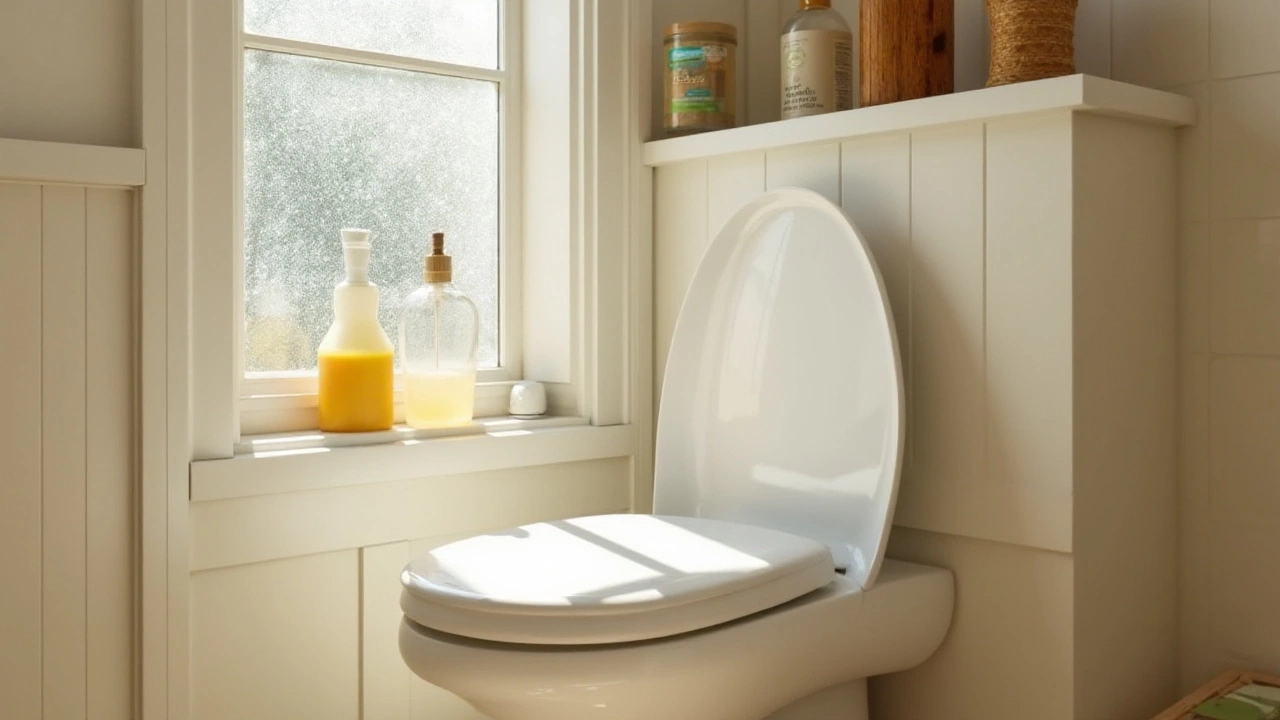Toilet Limescale Removal: Simple Steps for a Sparkling Bowl
Got white crust inside your toilet? That’s limescale – a hard‑water villain that makes the bowl look nasty and can even damage flushing parts. The good news? You don’t need a chemistry degree to get rid of it. Below are real‑world tricks and product picks that actually work.
Why Limescale Shows Up in Your Toilet
Limescale forms when water with high calcium and magnesium levels sits and evaporates. Every flush leaves a thin film, and over weeks it builds into that chalky ring around the rim or at the base. It’s not just ugly; the rough surface can hide germs and make cleaning harder.
DIY Methods That Really Cut Limescale
White vinegar soak – pour about half a litre of straight white vinegar into the bowl, letting it sit for at least one hour. For stubborn spots, let it sit overnight. Scrub with a toilet brush, then flush. Vinegar’s acid dissolves calcium, and it’s safe for most plumbing.
Citrus power – slice a lemon or use bottled citric acid (around 2‑3 tbsp mixed with warm water). The natural acid works like vinegar but leaves a fresher scent. Apply, wait 30 minutes, then scrub.
Baking soda boost – after a vinegar soak, sprinkle baking soda around the rim. The fizz helps lift the scale and neutralises any vinegar odor. Give it a quick brush and flush.
If you prefer a ready‑made solution, look for products labeled “limescale remover” or “hard water stain remover.” These usually contain phosphoric or hydrochloric acid, which act faster than household items. Follow the label, wear gloves, and ventilate the bathroom.
Safety tip: never mix commercial cleaners with vinegar or bleach. The chemical reaction can produce harmful gases.
Preventing Future Build‑Up
Prevention is cheaper than removal. Add a cup of vinegar to the tank once a month; it circulates with each flush and reduces scale formation. If your water is extremely hard, consider a water softener or a small inline filter for the toilet inlet.
Regular cleaning also helps. A quick brush and a splash of vinegar once a week keeps the film thin, so it never hardens into a thick ring.
Finally, check for leaks. A slow leak can create constant wet spots where scale gathers faster. Fix any drips promptly.
With these steps you can keep your toilet looking clean and avoid costly plumber visits. Try the vinegar soak first – it’s cheap, safe, and surprisingly effective. If the crust remains, move on to a commercial limescale remover and finish with a fresh rinse. Your toilet will thank you, and you’ll spend less time scrubbing and more time enjoying a fresh‑smelling bathroom.

Effective Ways to Remove Toilet Limescale: End of Tenancy Cleaning Tips
Limescale build-up in toilets is not only unsightly but can also pose challenges during the end-of-tenancy cleaning process. This article dives into practical and effective methods to tackle stubborn limescale. Discover easy-to-follow tips, natural remedies, and tools that can transform your toilet back to its pristine state. Ensure a smooth handover with these expert cleaning strategies. Learn to maintain sparkling toilets and avoid common pitfalls.
Read More